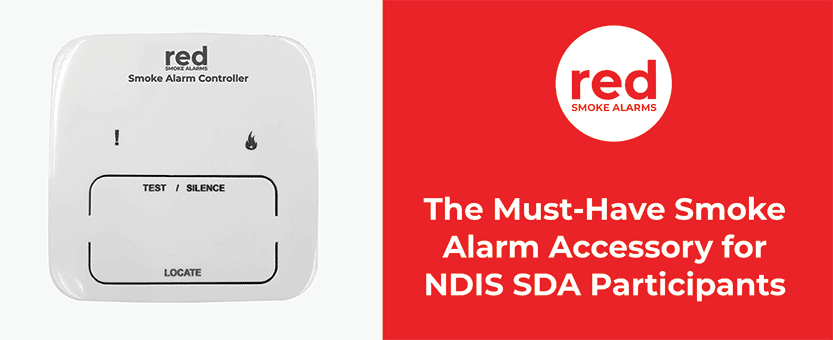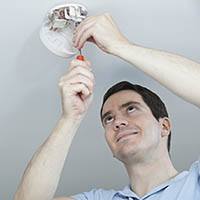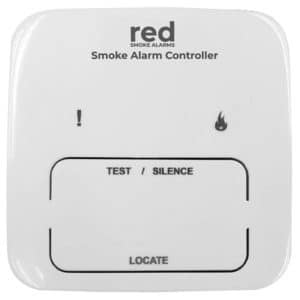Here’s Why Smoke Alarm Controllers Can Be a Valuable Addition to SDA Homes

Specialist Disability Accommodation (SDA) provides a range of housing options for those with very high support needs and extreme functional impairments. SDA homes include a range of accessible features that allow participants to live more independently while accessing the support services they need.

In addition to the structural design standards, other smaller but equally important accessible features can be added to make everyday essential tasks and activities easier for SDA participants. A good example of this is a smoke alarm controller, which allows occupants to control their interconnected smoke alarms via a wall-mounted control panel, rather than needing to access the smoke alarm unit itself. For people who use a wheelchair, have a reduction in motor skills, or have a cognitive or developmental disability, the inclusion of a wall controller in their home could potentially be a fantastic addition. So, in this article, we discuss what smoke alarm controllers are, how they work and who they could help.
What is a smoke alarm controller?
As touched on above, a smoke alarm controller is a wall-mounted unit that can test, isolate and silence your connected wireless smoke alarm, without you needing to access the unit itself. This means you can mount the controller to easily accessible wall space, and you have control over the functions without needing to quickly get a chair, ladder or broom to reach your smoke alarm if it is triggered or needs testing. That way, you not only avoid the hassle of moving furniture or locating the broom or ladder in a hurry, you also remove the risk of potential injury from a fall and the danger of damaging your alarm or other household items.
The SDA design standard requires “Smoke alarms that are in keeping with a home environment shall be provided in bedrooms and living spaces”
The Building Code of Australia Volume Two includes the following requirements
3.7.5.2 Smoke alarm requirements
Smoke alarms must—
- be located in—
- Class 1a buildings in accordance with 3.7.5.3 and 3.7.5.5; and
- Class 1b buildings in accordance with 3.7.5.4 and 3.7.5.5. (b)
- comply with AS 3786, except that in a Class 10a private garage where the use of the area is likely to result in smoke alarms causing spurious signals, any other alarm deemed suitable in accordance with AS 1670.1 may be installed provided that smoke alarms complying with AS 3786 are installed elsewhere in the Class 1 building; and
- be powered from the consumer mains source where a consumer mains source is supplied to the building; and
- be interconnected where there is more than one alarm.
3.7.5.3 Location — Class 1a buildings
In a Class 1a building, smoke alarms must be located in—
- any storey containing bedrooms, every corridor or hallway associated with a bedroom, or if there is no corridor or hallway, in an area between the bedrooms and the remainder of the building; and
- each other storey not containing bedrooms.
3.7.5.4 Location — Class 1b buildings
In a Class 1b building, smoke alarms must be located in—
- every bedroom; and
- every corridor or hallway associated with a bedroom, or if there is no corridor or hallway, in an area between the bedrooms and the remainder of the building; and
- each other storey.
3.7.5.5 Installation of smoke alarms
Smoke alarms required by 3.7.5.3 and 3.7.5.4 must be installed on or near the ceiling, in accordance with the following:
- Where a smoke alarm is located on the ceiling it must be—
- a minimum of 300 mm away from the corner junction of the wall and ceiling; and
- between 500 mm and 1500 mm away from the high point and apexes of the ceiling, if the room has a sloping ceiling.
- Where (1) is not possible, the smoke alarm may be installed on the wall, and located a minimum of 300 mm and a maximum of 500 mm off the ceiling at the junction with the wall.
How do they work?
The wireless smoke alarm controller requires no wiring to install as it is powered by a 10-year lithium battery. This means you simply mount it to the wall in an easily accessible position, then follow the instructions to connect it to your compatible unit. Once connected, you can communicate with your installed smoke alarms, without needing to reach the alarm itself. With one button you can locate any triggered smoke alarms quickly and easily, so you can assess the danger and identify false alarms. If your alarm has been falsely triggered, you can silence it from your controller, without needing to physically reach the affected unit itself. You can also test the smoke alarm via the wireless wall controller too, making it simple to perform regular maintenance checks to ensure the alarm is operating effectively.
How can smoke alarm controllers help?

Because smoke alarms are positioned at height on the ceiling, reaching the button to silence or test an alarm can be challenging for most, especially those with mobility limitations. Having the ability to control connecting smoke alarms within the house from an accessible-height, means many people using a wheelchair and other mobility aids can now test, silence and identify triggered smoke alarms without the need to seek assistance. This saves them from the frustration and stress of the common problem of being unable to silence a false alarm without seeking outside help.
With an affordable price point and no wiring required to install the unit, the smoke alarm controller could prove an extremely useful addition to any home, particularly for people with mobility limitations including those living in Specialist Disability Accommodation.
To find out more about smoke alarm controllers and accessibility, get in touch with our friendly and knowledgeable team today at EvacuLife or 1300 994 890.
Categories
Recent Posts
- Upgrading an Existing House to Specialist Disability Accommodation
- Why Robust SDA is Failing Participants, Carers and Investors
- The Stupidity of Hybrid Design SDA with Robust
- Introducing the Turtle Tough TV enclosure—the perfect protection for your TV in Robust Specialist Disability Accommodation
- How much money will I earn investing in Desirable SDA Specialist Disability Accommodation?
